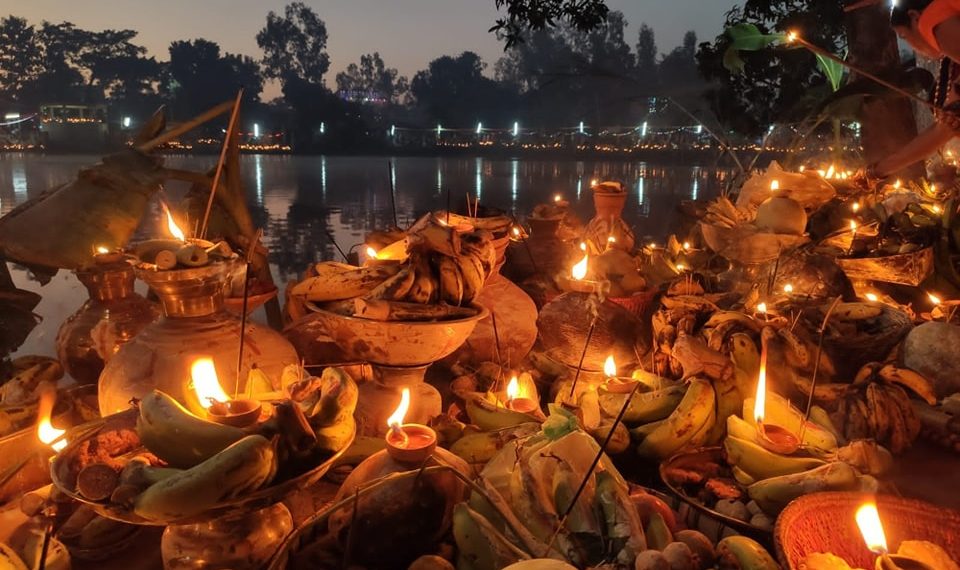The city of Janakpurdham is glowing with devotion and celebration as thousands of worshippers gather to mark Chhath, one of Nepal’s most vibrant festivals of faith, purity, and social harmony. As part of the four-day celebration, devotees will today offer “Sajhuka Argha” — evening prayers and offerings — to the setting sun.
Chhath, known for promoting nonviolence, gratitude, and compassion, has expanded from the Terai-Madhesh region and is now celebrated across Nepal, including Kathmandu.
The festival, observed from Chait Shukla Chaturthi to Saptami, begins with the ritual of Nahay-Khay, a cleansing bath followed by a pure vegetarian meal.
The second day, known as Kharna, is marked by the preparation of sweet rice pudding (kheer) made with jaggery, which devotees eat after fasting through the day. The festival continues to the main day, Chhathi, when worshippers observe a strict fast and offer fruits like bananas, sugarcane, and brinjal, along with milk, clay elephants, and lamps, to the Sun God (Surya Dev).
This evening, devotees will gather at ponds, rivers, and lakes, standing waist-deep in water to offer prayers to the setting sun — a ritual known as Sajhuka Argha. Tomorrow morning, they will conclude the festival by offering Bhoraka Argha, prayers to the rising sun, before breaking the fast.
The riverbanks and ghats of Janakpurdham are decorated with flowers, lights, and tents, where devotees will stay overnight, singing traditional songs and keeping vigil until dawn.
Chhath, a Hindu festival celebrated in Kartik (October–November) and Chaitra (March–April), occurs twice annually and holds deep religious significance. Both Chhaths are important in Hindu tradition, but the Kartik Chhath sees far greater participation.
With prayers, songs, and lamps reflecting off Janakpurdham’s sacred waters, the city stands illuminated in devotion, a testament to faith that connects families, communities, and generations.





